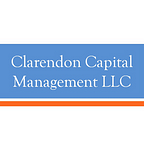CCM’s Return and Risk Measurement
I had a great time at the 2019 Berkshire Hathaway Annual Meeting and spoke with several other value investors. During a few discussions, I was comparing notes — how should we as value investors measure ourselves?
CCM’s stated primary objective has been a positive absolute return. A secondary target is outperforming the S&P 500 as measured by IVV (iShares ETF). Over the seven years since CCM’s inception, we have underperformed the S&P 500. IVE, the iShares large-cap value index has trailed the S&P 500 benchmark too. Let me cover the four alternatives for performance measurement, and how I measure my effectiveness as a manager. The following list is in order of complexity.
Absolute return. Our objective is to produce positive returns to compound over time. When accomplished, it will create significant wealth. Negative periods of performance are incredibly damaging. The obvious flaw with absolute return measurement is that it does not account for risk exposure, even risk components such as leverage are left unaccounted. One positive to this metric is that it proves itself over long time horizons.
Relative return. CCM’s secondary benchmark is over/underperformance against the S&P 500 index using iShares IVV ETF. This method captures risk to the extent that the index aligns with and is comparable to the portfolio. For a manager that employs different strategies over time, is multi-asset, or fits into a different style category, an index like IVV is less appropriate. The S&P 500 not always consistent with the risk and strategy that CCM is assuming. In particular, the risk of some of CCM’s positions in “special situations,” microcaps, covered calls/hedged, and arbitrage investments are pretty distinct from a large-cap core holding. Given these style and strategies differences, it seems inappropriate to use the S&P 500. A suitable and highly correlated index to the different corridors CCM uses does not exist. Additionally, it is a highly liquid and widely used alternative to stock exposure in asset allocation. Warren Buffett has suggested it as a 90% asset allocation for the average investor with a long investment horizon with low costs. IVV is a realistic and straightforward alternative for clients choosing to invest with CCM or on their own.
Risk-adjusted basis. Common examples of this would be the Sharp ratio, Treynor ratio, or Jensen’s Alpha; the latter two statistics use portfolio beta (https://www.investopedia.com/terms/b/beta.asp). However, beta is not a reliable risk indicator to most value investors, as many would not use CAPM (https://www.investopedia.com/terms/c/capm.asp) as a return target for individual stock investments. This perceived unreliability is because volatility is an opportunity for a favorable entry point, and that volatility is not indicative of the risk of the underlying business but instead measures the movement of a stock price, not the underlying value of the business. As I think about CCM’s returns over the last seven years, there have been many points, including today, when I would describe the portfolio is having significantly less risk than the market.
The following calculations and estimates are illustrative and oversimplified. The critical assumption is that I am using the current beta of the portfolio (weighted average of three-year stock betas) as a proxy for performance rather than calculations over time. When I have made these calculations in the past on an ad-hoc basis, it has consistently been below 1.0, but not at an identical level to today.
The current beta of CCM’s core equity strategy is approximately 0.67, two-thirds that of the S&P 500. Since CCM’s inception, the Treynor ratio of CCM’s value equity strategy would be 0.145 vs. 0.120 for IVV and CCM’s Jensen’s Alpha is +1.67%.
Treynor Ratio formula — (Portfolio Return — Risk-Free Rate) / Portfolio Beta Jensen’s Alpha formula — Portfolio Return — [Risk-Free Rate + Portfolio Beta * (Market Return − Risk-Free Rate)]
Since 2017, CCM has not fared as well even on these beta risk-adjusted measures. In 2017, CCM decided to search for value looking at more small/micro-cap names and special situations. A three-year beta can be a poor reflection of risk due to the transitions often occurring in the underlying businesses and the different time horizon/holding period of such investments. Given the heightened valuation levels and other financial market risks, I am pleased that our strategy is conservatively positioned — both in my opinion and statistically. Regardless, CCM’s recent underperformance using this method is motivation to do better in achieving long-term positive returns.
Subjective assessment. I consider my level of concern and worry. I do not want to be losing sleep, anxious, or prone to irrational thinking. If these side effects are happening due to worries over risks and particular investments, it is critical to rethink the investment — could the risk be managed differently or reduced, and if it cannot, sell it and find something else. A level of angst will often compound into more mistakes and poor timing decisions. In addition to the simple “sleep test,” as one becomes more experienced, one is on the lookout for broader “what if scenarios” and understanding the impact on investments. There is also a constant litmus test comparing the risk one investment versus another. These what ifs and relative risk thoughts give a manager a feel for the assumed risk taken. Plus, there should be a continual analysis and review of one’s mistakes and process. While not empirical and susceptible to biases, this gut check can be very reliable.
In the end, incorporating all four of these into periodic assessments is beneficial. CCM’s benchmarks and measurement of returns will remain as absolute and relative to IVV, but alternatives of a risk-adjusted return and my subjective self-assessment will also be reviewed more carefully going forward. Thank you for reading.
Carlos P. Sava, CPA, CFA
Portfolio Manager, Clarendon Capital Management
